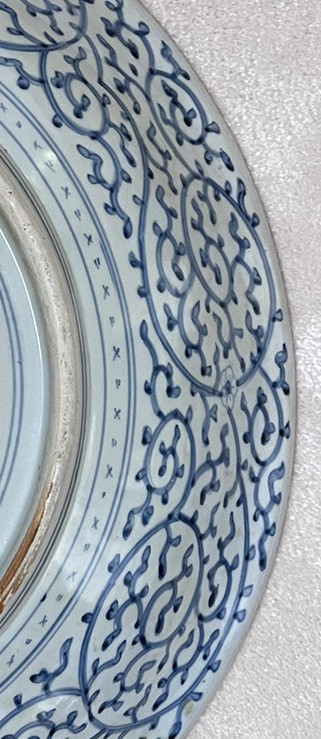
Karakusa, Japanese China plant pattern under the rim of a Japanese mid 19th century dish, probably Kutani.
In Japanese the kara of Karakusa means "China", while kusa means "plant", meaning "Chinese plants". The pattern is first found in Egypt, and seems to have been based on shapes from nature, like seaweed, ferns or vines. The pattern was introduced to Asia via the Silk Route, merged with the Buddhist culture of China and reached Japan in the ASUKA period (7th Century AD).
In Chinese porcelain decoration this pattern is usually what is referred to as 'scraffiato'. It takes a prominent place on so called Medallion, Palace or Peking bowls from 19th century and onwards, with a decoration consisting of four panels set against a monochrome "engraved" scraffiato enamel background
A